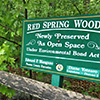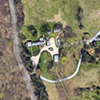Nassau land deals saved acres of pristine property test
Many of the sites acquired in the landmark Environmental Bond Acts are widely cited as successes.
Nassau County’s environmental bond act program, which dedicated $100 million to open space preservation, saved scores of acres of pristine land that could have been vulnerable to development.
Though several purchases – including those from politically connected sellers – were never fully enhanced for public access, as promised, there were others where the public benefit appears to be uncompromised.
“I don’t want the public to be left with the impression they got screwed, because I don’t believe that,” said Citizens Campaign for the Environment executive director Adrienne Esposito, who served on the advisory committees that recommended open space purchases to then-County Executive Thomas Suozzi and the county legislature.
“I really feel this was an immensely successful program for Nassau County residents that leaves a better environmental legacy,” she said.
Voters approved the bond acts in 2004 and 2006. Between 2006 and 2012, Nassau closed on 23 properties totaling about 300 acres that the committees had recommended, using criteria such as size, connection to existing preserves and importance to groundwater supply.
Today, many are widely cited as successes:
- The preservation of some of Nassau’s last remaining working farms. Under the first environmental bond act, the county spent $4.3 million on development rights to the 8.5-acre Meyer’s Farm in Woodbury and, in the second, bought the former 5-acre Grossman’s Farm in Malverne for $6.5 million, and the 2.5-acre Fruggie’s Farm in East Meadow for $2.1 million. The latter two have since been contracted out to nonprofits for continued operation.
- The purchase of, or securing of development rights to, two portions of the Boegner Estate in Old Westbury. For $6.2 million, Nassau ensured that 47 acres would be preserved alongside Old Westbury Gardens’ existing 160 acres. The deal received legislative approval shortly before the 2006 death of the landowner, heiress Margaret Phipps Boegner, who had opened the nonprofit Gardens on the larger part of her family’s expansive grounds.
- The acquisition of a Brookville horse farm, known as Old Mill, to ensure more affordable equestrian programs for all county residents, “not just for the select few,” as officials put it at the time. Nassau spent $12.1 million for the 40-acre site and has since contracted with a private company to run the renamed Nassau Equestrian Center.
Cynthia Cooper, a former Lakeview civic activist who served on the advisory committees, recalls researching the Old Mill property’s history and learning it was once a part of the Underground Railroad system that helped African-American slaves in the 1800s make their way into free states.
“It was one of the properties that really stuck with me,” Cooper said. “It had historical significance other than it being just a horse stable.”
The county also acquired land that helped connect a Mill Neck nature preserve with an existing Japanese stroll garden. It joined with the North Shore Land Alliance, the Oyster Bay nonprofit that played a significant role in the process, and a private investor to preserve a 60-acre field in Old Brookville.
That site had previously been owned by Banfi Vinters, but is now dedicated for use by local farmers.
The vista of rolling farmland over the horizon has become an attraction for visitors to nearby Youngs Farm, a popular purveyor of fresh produce and pies.
“That could be the poster child for what works in government,” the multigenerational farm’s owner, Paula Youngs Weir, said as she looked out the window of her farmstand shop.

 Overview:
Overview: Map:
Map: Part 1:
Part 1: Part 2:
Part 2: Part 3:
Part 3:


 Video:
Video: